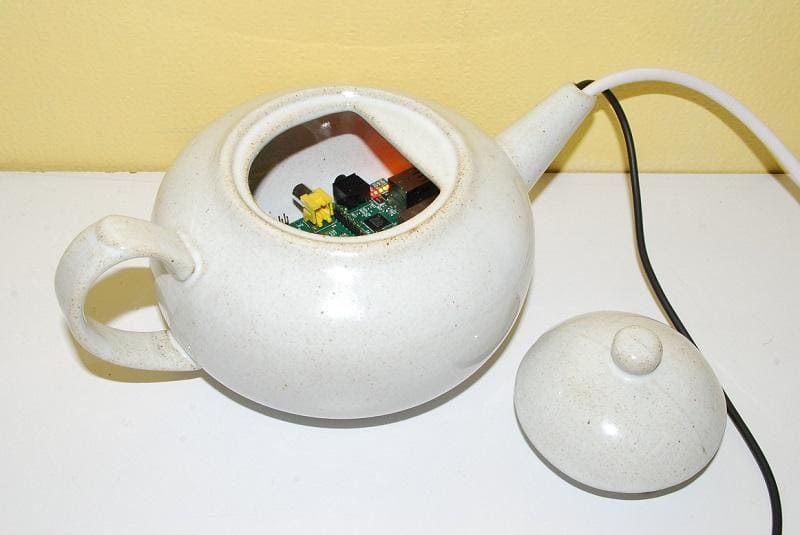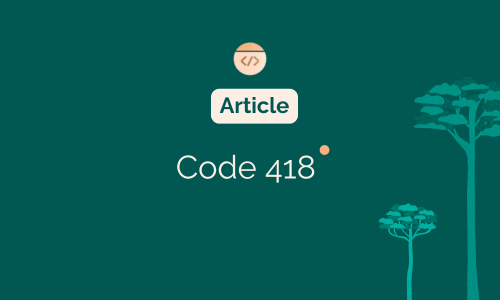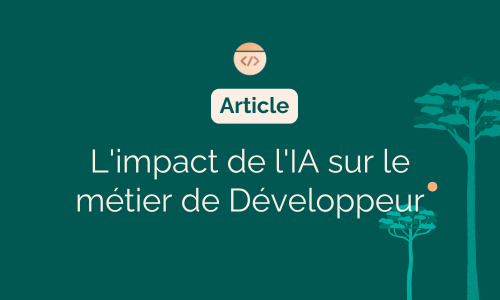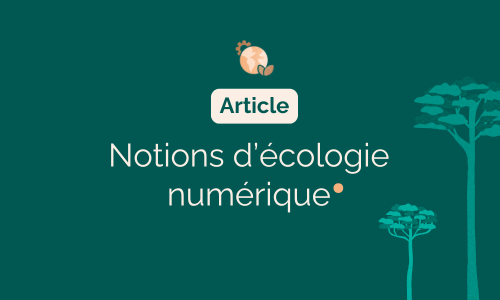The HTTP codes
HTTP codes describe a standardized state of communication between a web server and a client (e.g. web browser). When a user attempts to access a web page or exchange data, the server responds with a coded number indicating the status of the request (read more).
HTTP code categories
These codes are divided into different categories:
- 100 - 199 : Informative answers
- 200 - 299 : Success answers
- 300 - 399 : Redirection messages
- 400 - 499 : Client-side errors
- 500 - 599 : Server-side errors
These codes are essential for diagnosing web browsing. A 201 code confirms the creation of data on the server side. Conversely, a 404 code indicates the absence of the requested resource.
They are standardized to ensure consistency between different websites, APIs and so on. However, among them, one unconventional code stood out in a humorous and absurd way: "418 I'm a teapot".
Le code 418
The HTTP 418 code appeared on April 1, 1998 as an April fool's joke from the Hyper Text Coffee Pot Control Protocol (HTCPCP). This protocol describes a set of HTTP client-server exchanges for remotely managing a coffee pot (and other household appliances). Created for humorous purposes, it appears in an RFC (Request For Comments, i.e. technical specifications) written with sufficient seriousness and detail to be usable.
In this fictitious protocol, HTTP code 418 is used when a client (via a mobile application, for example) asks a teapot to brew coffee. However, if a teapot receives this request instead of a coffee maker, it must reply "418 I'm a teapot", indicating that it can only prepare tea.
Where to find code 418
But although the HTCPCP protocol and its 418 code were created for fun, over time it has found its place in certain contexts, beyond its emblematic representation of Internet culture:
- A "classic" Error response: Some Web developers use it playfully in tests or online games. For example, a development server may return a code 418 to indicate that an action is impossible. The absurdity of the message corresponds to the absurdity of the request.
- Easter Eggs easy to hide: Code 418 is sometimes embedded as an Easter Egg in applications or APIs. This means it can appear as a "surprise" response under special conditions. In this way, it offers a marketing wink to developers and users who are familiar with this cultural reference (Google, for example, has a dedicated page).
- Customization and training :
In educational contexts, HTTP code 418 is used to introduce non-standard HTTP codes. In particular, it is used in programming and web development courses. It illustrates the flexibility of the HTTP protocol. It allows the creation of customized codes and protocols to suit specific needs, even without official use.
Conclusion
The HTTP code 418 is 27 years old today. Originally a simple April fool's joke, it is not used in real, serious contexts. Yet it's on every list of searchable HTTP codes.
Beyond its functional aspect, it embodies the creativity and humor present in application development. This widespread meme reminds us that even in technical fields, the absurd has its place.

Source : Wikipedia

Alexandre PICARD
Practice Leader Product Development in Toulouse & Angular Tech Lead







